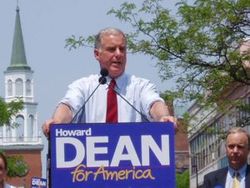 This is the sixth general election since the Web was spun, and the turning point in this history came with Howard Dean.
This is the sixth general election since the Web was spun, and the turning point in this history came with Howard Dean.
The Dean campaign was the first in the history of the Web that was based in and on the Web. Its blog, in 2003, was a mind-opening affair, one which allowed ordinary people the chance to actually have influence on a Presidential campaign for the first time.
That summer, around the time I visited their offices in South Burlington, campaign manager Joe Trippi hired a couple of political bloggers to advise him on what to do next.
 They were Jerome Armstrong of MyDD and Markos Moulitsas of DailyKos. Both said the campaign needed to ditch its blog platform for a Community Management System, or CMS. A CMS, they said, could scale the intimacy the campaign had created. They were absolutely right.
They were Jerome Armstrong of MyDD and Markos Moulitsas of DailyKos. Both said the campaign needed to ditch its blog platform for a Community Management System, or CMS. A CMS, they said, could scale the intimacy the campaign had created. They were absolutely right.
Trippi, who didn’t understand the technology he had just unleashed, dismissed the consultants. The result was a sea of orange-hatted Deanheads filling Iowa, a state that needed a far more intimate touch. John Kerry gave Iowa that intimacy, he won the nomination, so both Dean and Trippi faded into history.
But Armstrong and Moulitsas were just getting started. They launched what is now Vox, one of the new-style publishers disrupting the journalism business today. Moulitsas turned his DailyKos web site into the de-facto clubhouse of the Democratic Party. Possibly no online figure has as much political power. And many of the people who worked on that Dean site, people who listened to Jerome and to Markos, became the core of the Obama digital campaign.
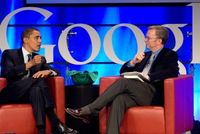
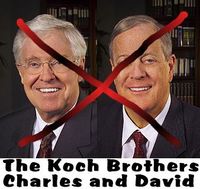
The 2012 campaign was mainly a re-run of 2008, but it’s important to note also here the failures of 2010 and 2014, when TV-based campaigns triumphed over everything the Obama people and the Democrats could do to motivate people. It brought up an important point about Internet campaigns. They must be organic. They can’t be built in isolation. They depend for their existence on good candidates who can generate excitement, and issues for those candidates to run on. The Internet can only direct people who are motivated in the direction the campaign wishes to go. It is totally unlike TV. It is not the messenger, and it is not the message. It is merely the medium.
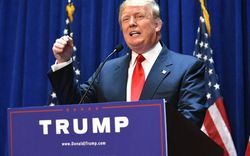
The Ben Carson campaign is a bit like Dean’s, in its effective use of low-cost Internet advertising to motivate people. But it’s also making effective use of direct-mail technologies that date from the 1960s, and from the heyday of people like Richard Viguerie. The use of mail appeals to motivate small donations is, unlike the Internet, entirely one-way and top-down, but on the right audience it can still work, and that is important to know.
The Donald Trump campaign is also instructive in showing the power of TV and celebrity, the medium of the last generation, in creating campaigns that work in the post-TV era. Trump has stayed ahead of his Republican rivals through pure bombast, through the manipulation of his image and celebrity before people who are willing to buy it. If it seems to come out of the past, a Trump presidency bankrupting the country was predicted in a 2000 episode of The Simpsons.
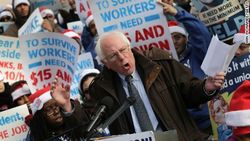
What about the Democrats?
The Sanders campaign offers the best comparison with the 2008 Obama effort. The web site, and its back end, are almost direct lifts from that campaign. It’s welcoming, with a lot of free content you can access while you make up your mind. The Hillary Clinton Web site is much more top-down, much more insistent on a visitor making a commitment before being allowed behind its curtains.
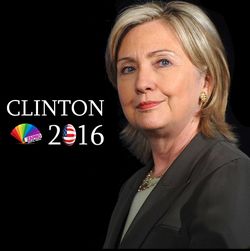
The Internet, remember, is a medium, an extra-large but still a medium. A Web site is your home on this medium, but the active, continuous use of all available elements of the Internet — e-mail, video, and third-party social media web sites – represents the next step forward. Dean created intimacy, but Obama scaled it, with deep technological aids to local campaigning. And this is the current state of the art.
My guess has always been that Hillary Clinton will be our next President. It’s a reversal of the last generational pattern, where a less-attractive and far more paranoid candidate, Nixon, became the crisis leader, and a far more charismatic character, Reagan, validated his politics. But it’s also more in keeping with the general historical pattern, as Lincoln was followed by Grant, Theodore Roosevelt by Taft, and FDR by Truman.
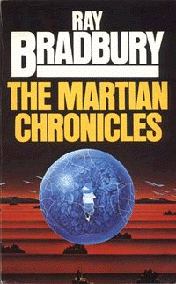
The same sort of thing has been happening in this decade. Today, after Barack Obama, the political wind blows mainly from the left, the dominant industry is technology, and the dominant medium is the Internet.
Whether Clinton wins next year or not, this is the political environment we’re going to live in going forward. The Right is increasingly out-of-step with how a growing majority of the American people feel, governing in defiance of public opinion rather than in conformance with it. (Consistent, confident majorities don’t need gerrymandering.) The degree to which the people get what they want is uncertain, it’s up to us, but what we want is clear. We want a new consensus around the idea of shared endeavor, we want more international cooperation, and the main issue is saving this planet’s ecosystem for humanity’s use.
What Ray Bradbury wrote as “The Martian Chronicles” is the real story of Earth in the 21st century.
The Internet has done its bit to enable this change, and it has been my privilege to cover it since before that beginning.









